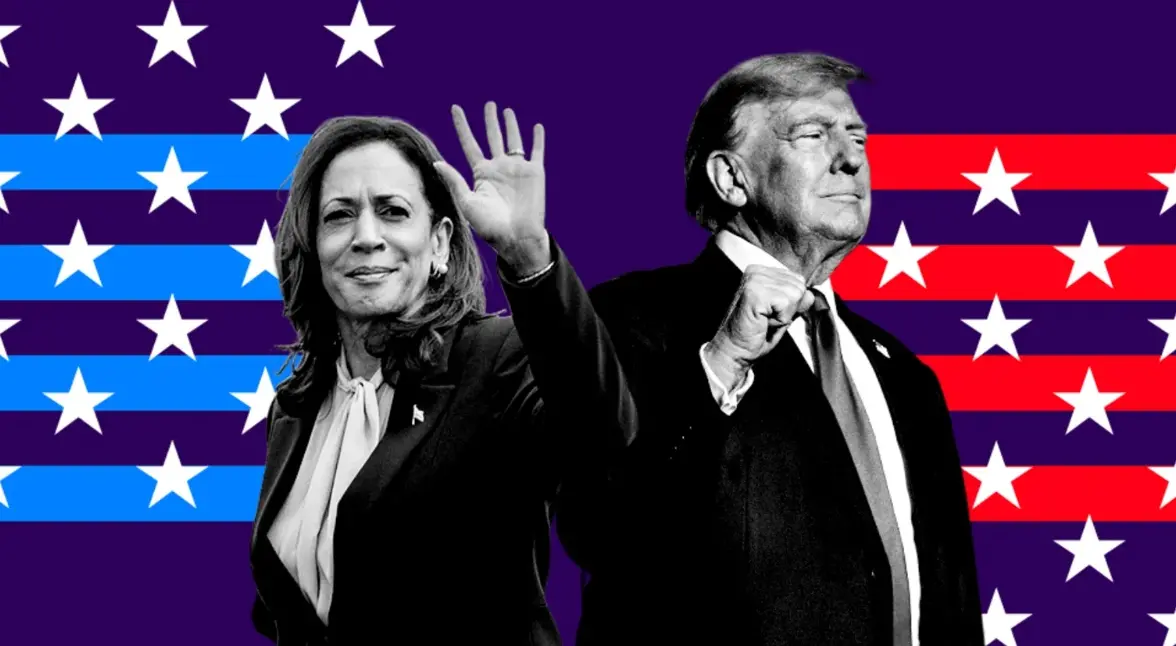The market bets on the "Trump Trade," how will the U.S. election affect asset prices?
Author: Lisa, LD Capital
I. Overview of the Election
On June 28, Beijing time, Biden and Trump held the first debate for the 2024 election, with Trump significantly gaining the upper hand while Biden's poor performance raised widespread concerns about his ability to serve due to his advanced age and mental state. Following the debate, Trump's approval ratings surged. Additionally, Trump holds a decisive advantage in swing states, leading in all seven major swing states (North Carolina, Arizona, Georgia, Nevada, Wisconsin, Michigan, and Pennsylvania).
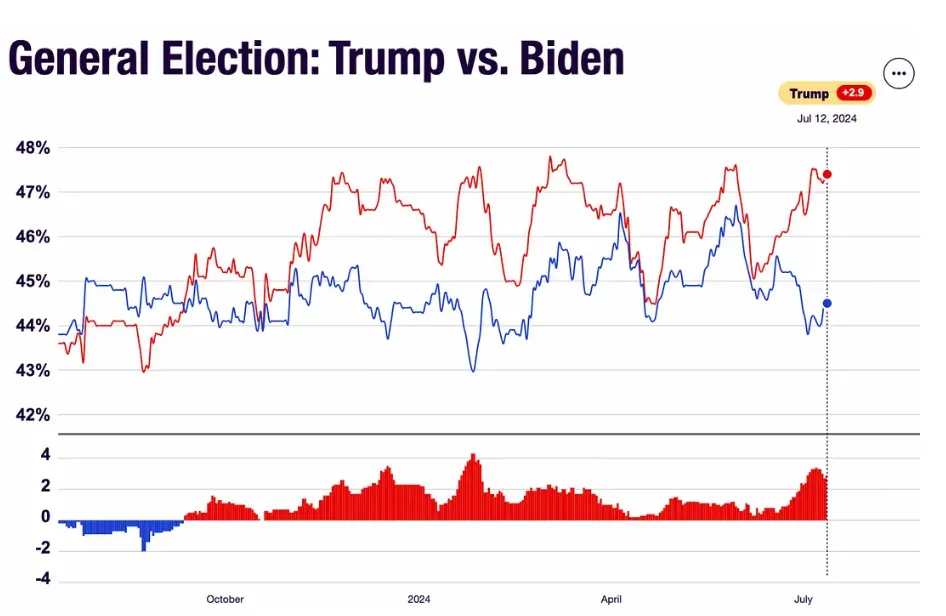 Source: https://www.realclearpolling.com/polls/president/general/2024/trump-vs-biden
Source: https://www.realclearpolling.com/polls/president/general/2024/trump-vs-biden
There are three key moments in the upcoming campaign:
1) National Party Conventions: The Republican National Convention will be held from July 15-18, 2024, and the Democratic National Convention from August 19-22, 2024, where each party will nominate its presidential and vice-presidential candidates.
2) Second Round of Candidate Debates: September 10, 2024.
3) Presidential Election Day: November 5, 2024.
II. Major Policy Differences
Trump and Biden have relatively consistent views on infrastructure, trade, foreign affairs, expanding investment spending, and encouraging the return of manufacturing, but they have significant policy differences on taxation, immigration, and the new energy industry.
1) Taxation
Trump advocates for continuing to reduce the corporate income tax from 21% to 15% and does not support directly increasing fiscal spending; whereas Biden's "Balancing Act" proposes raising tax rates for corporations and the wealthy, increasing the corporate tax rate to 28%, while continuing to forgive student loans. Trump's tax cuts during the previous administration boosted U.S. stock profits and facilitated the return of overseas funds. The proposed tax cuts in this campaign are weaker than those in the past (the previous tax reform adjusted the rate from 35% to 21%), and the boosting effect is also relatively weaker than before. CICC estimates that the net profit growth rate of the S&P 500 index in 2025 can be raised by 3.4 percentage points to 17% from the market consensus expectation of 13.7%.
2) Immigration
Since Biden's inauguration on January 20, 2021, there has been a significant increase in illegal immigration to the U.S. Compared to Biden's moderate immigration policy, Trump advocates for continuing to tighten immigration policies, but relatively relaxes requirements for "high-level" talent. The tightening of immigration policies may weaken the momentum of U.S. economic growth and accelerate wage growth.
3) Industrial Policy
There are significant differences between the two in areas such as energy. Trump advocates for a return to traditional energy, accelerating the issuance of oil and gas exploration permits, and increasing the development of traditional fossil fuels to ensure the U.S. maintains a cost advantage in energy and electricity, while potentially eliminating green subsidies for new energy vehicles and batteries; Biden, on the other hand, advocates for continuing to promote the development of clean energy.
4) Trade Policy
Both Biden and Trump implement high tariff policies, which may raise the costs of imported raw materials and goods in the U.S., thereby creating resistance to a decline in the CPI. Compared to Biden, Trump's policies are more aggressive. Biden announced in May an increase in tariffs on Chinese imports, with the scope of Biden's increase covering only $18 billion worth of goods, with some increases not taking effect until 2026. Trump stated he would impose a baseline tariff of 10% on goods entering the U.S., while imposing additional tariffs of 60% or higher on China, and would also levy "specific taxes" on certain regions or industries.
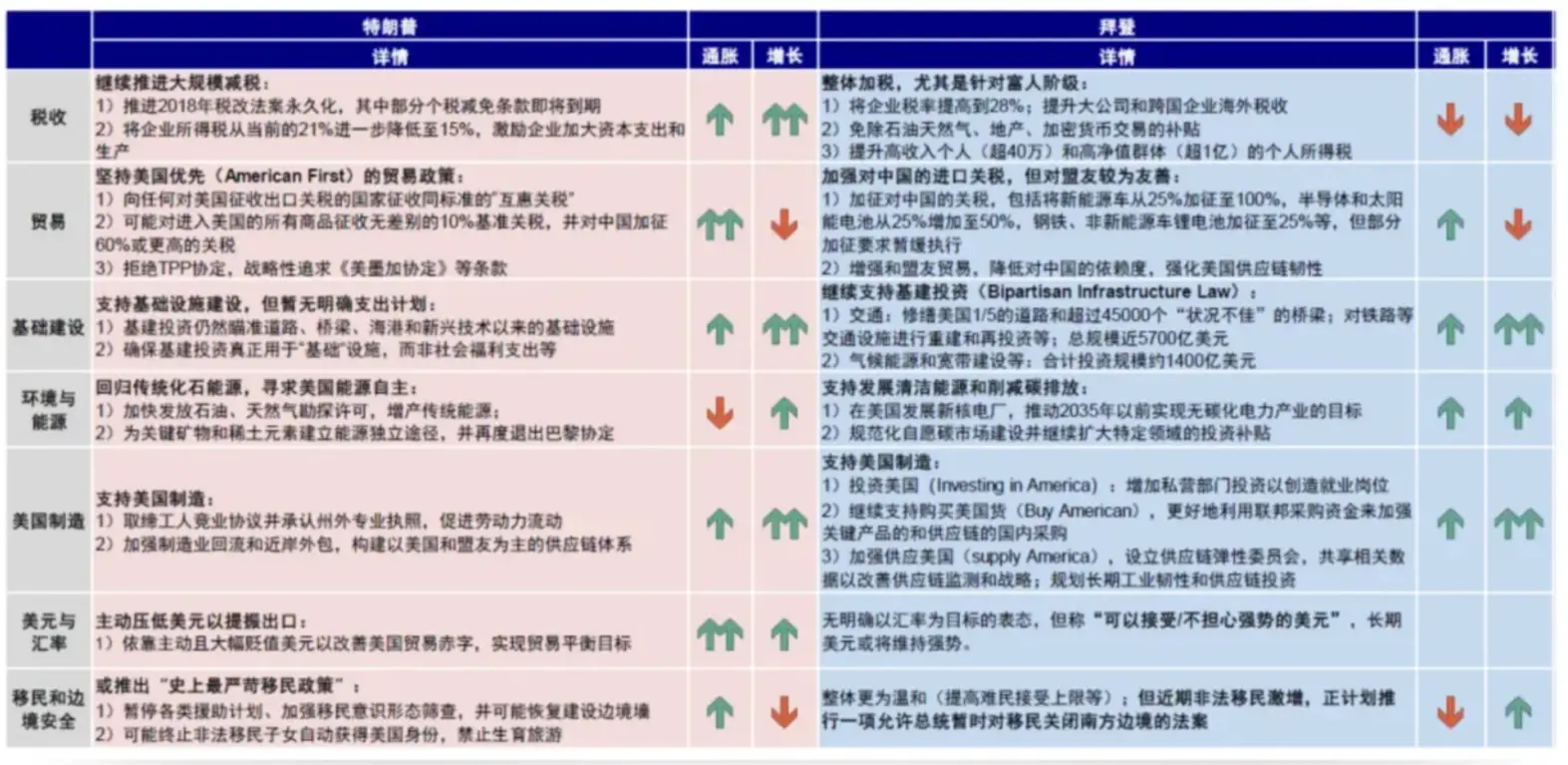
It can be seen that in the above image, Trump's green arrows are significantly more numerous, indicating that his tariff policy, domestic tax cuts, and immigration policy are all unfavorable for a decline in inflation.
III. General Characteristics of Asset Prices in Election Years
First, from an annual perspective, the overall market performance and the magnitude of changes in the federal funds rate during the election year do not show significant differences compared to other years.
On a quarterly and monthly basis, in the early stages of the election (mainly referring to the third quarter of the election year), the magnitude of changes in the federal funds rate is significantly smaller than in other quarters, while asset prices exhibit higher volatility during this period. The underlying reason may be that monetary policy tends to remain unchanged as the election approaches to avoid suspicion, while asset prices fluctuate due to the uncertainty of the election results. In contrast to the strong seasonal patterns often seen in non-election years in October to December, stock prices in the October before the election show significantly weaker performance than in non-election years.
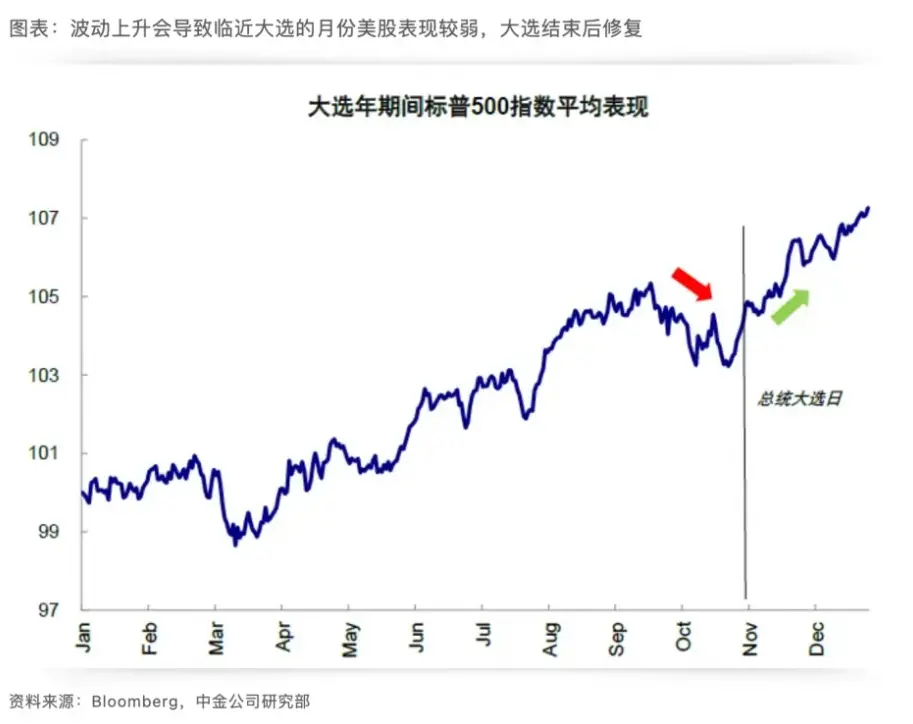
IV. Review of Market Conditions After Trump's Last Election
On November 9, 2016, the preliminary results of the U.S. presidential election were announced, with Republican presidential candidate Donald Trump winning the election and becoming the 45th president of the United States. At that time, Trump's victory exceeded market expectations, leading to fluctuations in asset prices, and the market bet on the "Trump Trade." From November to December 2016, there was a rise in U.S. Treasury yields, a strong dollar, and a robust U.S. stock market, with trading diminishing after expectations were digested. Below are the price changes of various assets at that time (all are weekly charts).
U.S. Treasury yields rose and then fell
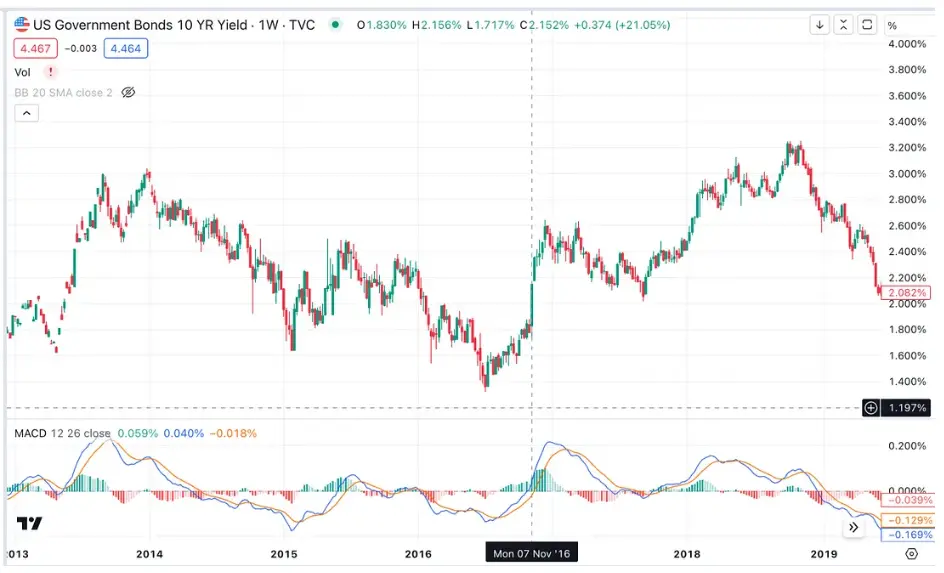
Corresponding to the fluctuations in U.S. Treasury yields, gold first fell and then rose
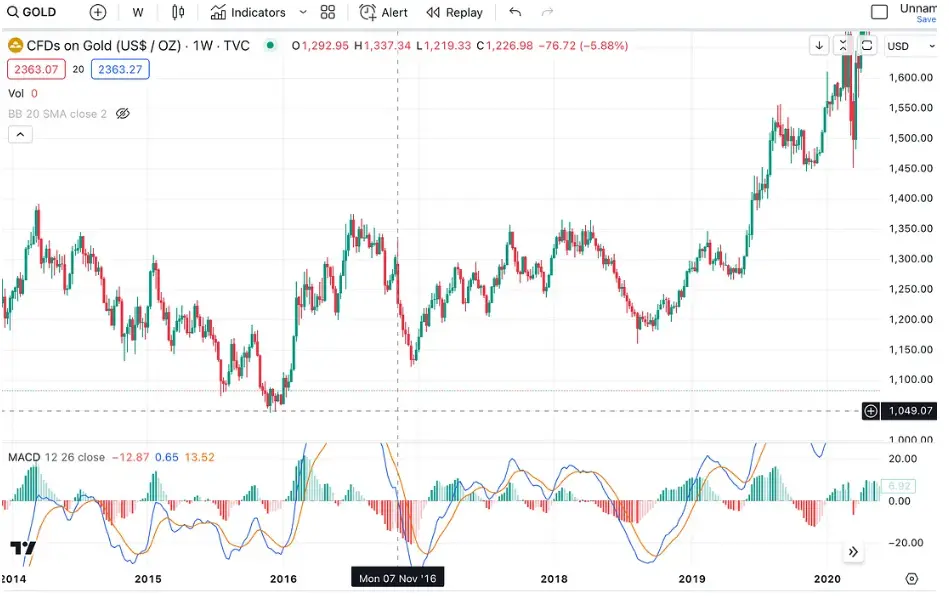
S&P rose
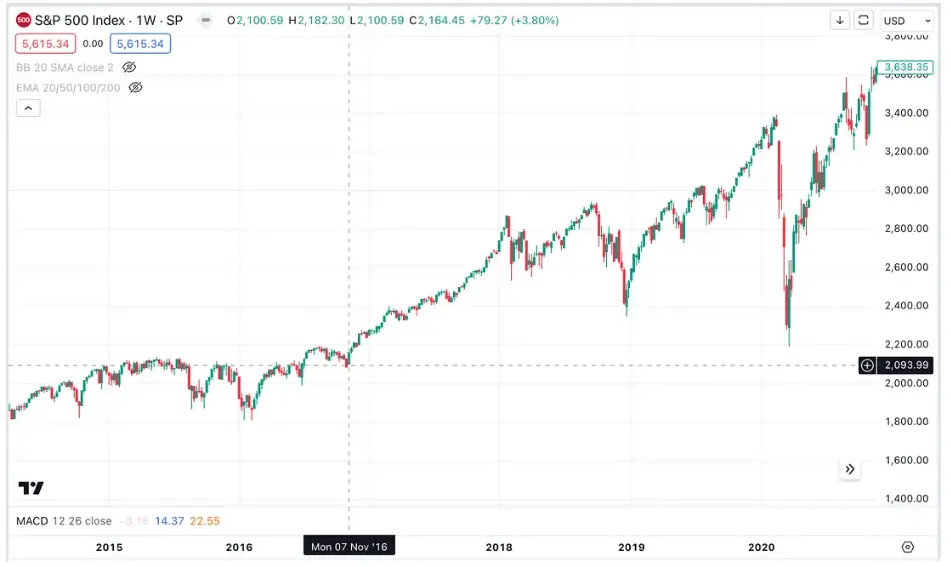
NASDAQ rose
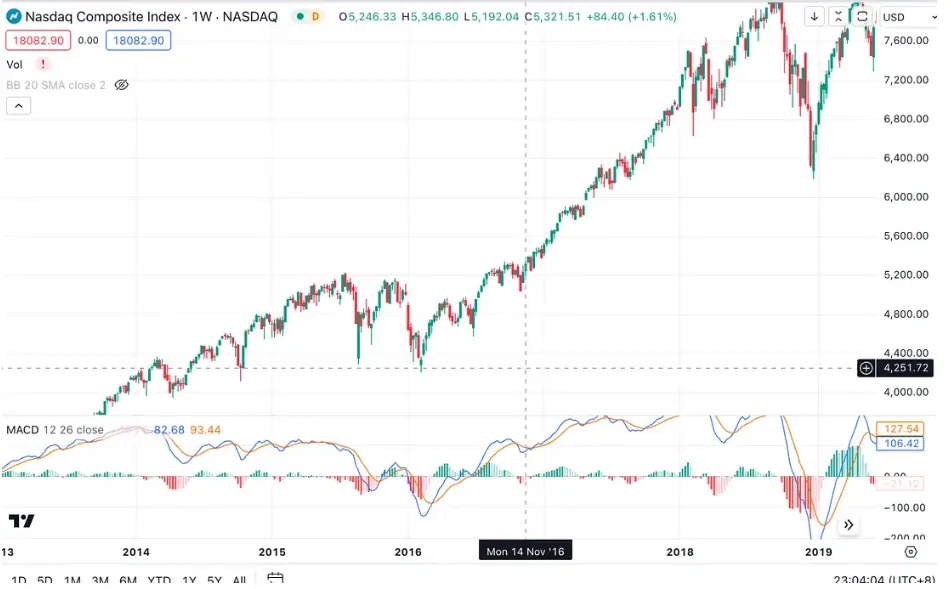
BTC rose
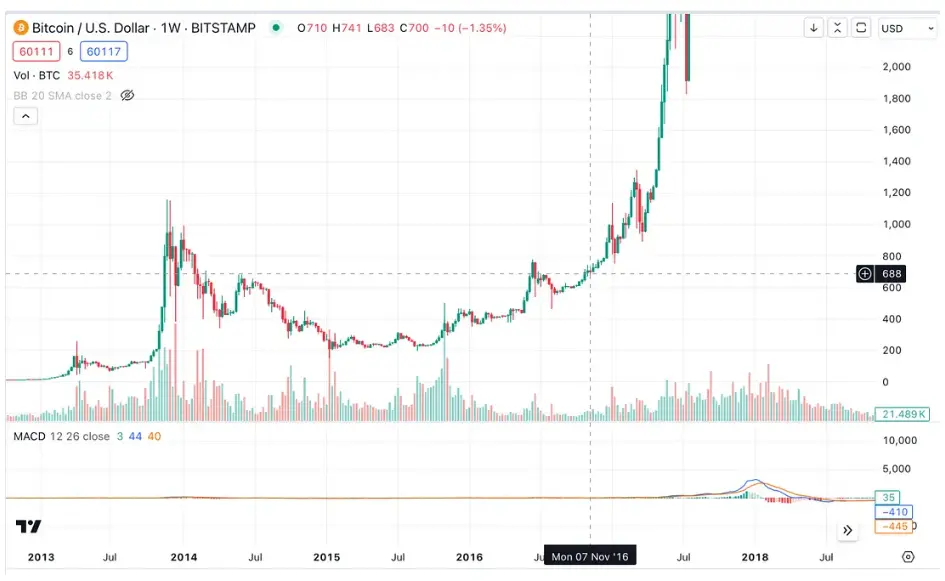
The timing for the current "Trump Trade" has been significantly advanced, with market expectations for Trump's victory noticeably increasing after the first candidate debate, prompting the market to begin positioning for the "Trump Trade." The yield on the 10-year U.S. Treasury rose to around 4.5% the day after the debate.
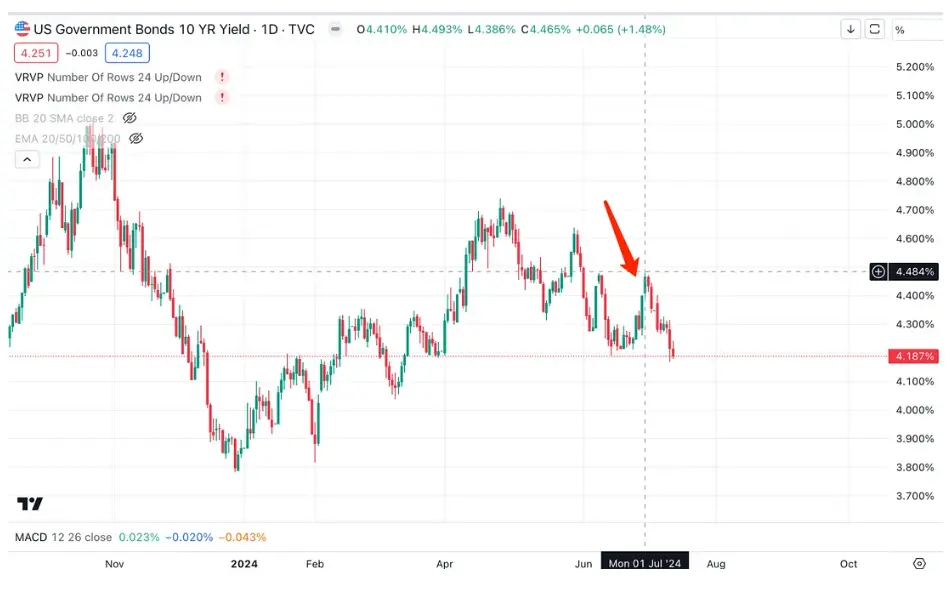
Combined with the potential additional votes Trump may gain from the shooting incident on July 14, the most likely outcome is Trump's election as president and the Republican Party controlling both the House and Senate. It can be anticipated that the shooting incident will bring an upward trend to the U.S. stock market on the upcoming Monday.
V. Conclusion
The impact of the U.S. election on the market:
1) The election itself cannot be used as a reason to trade bullishly; the simplistic logic that the Democratic Party needs the U.S. stock market to remain bullish to win the election does not hold.
2) In a typical election year, there is a downside risk in the market around October due to increased volatility.
3) Trading the election results (Trump Trade) mainly involves going long on CPI and U.S. Treasury yields (here "long" is relative to the market's downward expectations, meaning it creates resistance to a decline in CPI and U.S. Treasury yields rather than an absolute increase), short on gold, and long on U.S. stocks, but with less intensity than during Trump's last election; long on BTC (believing BTC follows U.S. stocks more closely, and the divergence from U.S. stocks is not sustainable in the long term & Trump is crypto-friendly).



